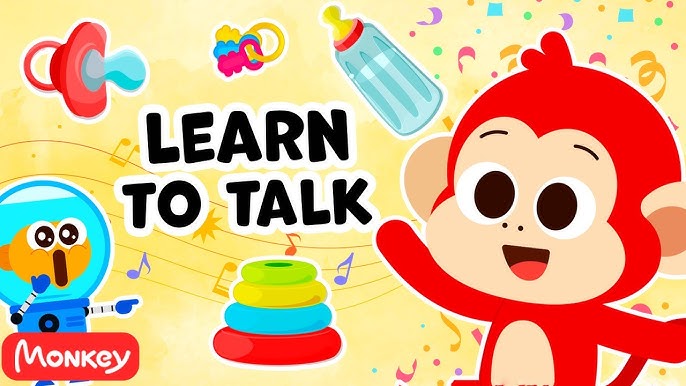Many parents wonder how to learn speaking English fluently and help their children communicate with confidence. The truth is, fluency doesn’t come from memorizing words, it grows from daily speaking, listening, and real-life practice.
Why Speaking English Fluently Matters for Children
The Power of Early Language Exposure
Children’s brains are most receptive to new sounds and patterns between the ages of 3 and 8. This makes it the perfect time to start English speaking practice. Early exposure helps them absorb pronunciation, rhythm, and intonation effortlessly - things that often challenge adult learners.
Moreover, speaking English early strengthens listening ability. When children repeat what they hear, their brains form stronger sound associations, improving both comprehension and pronunciation accuracy.
How Fluency Builds Confidence and Creativity
Fluency is not only about speaking quickly; it’s about expressing ideas clearly and confidently. A child who can describe their favorite toy or talk about their day in English develops communication confidence that will benefit them for life.
This confidence extends beyond language. When children speak English, they learn to think in another language, unlocking creativity and problem-solving skills. It also prepares them to connect with people around the world, an essential advantage in today’s multicultural society.
Tip: Encourage children to use English to describe emotions or daily experiences. For example: “I feel happy today because we went to the park.” This helps link language with real-life feelings.

How to Learn Speaking English Fluently from an Early Age
Step 1 – Build Daily English Habits
Consistency is the secret to fluency. Encourage your child to use short, simple English sentences every day. For example:
-
“Good morning, Mom.”
-
“I’m hungry.”
-
“Let’s play!”
Parents can create mini-routines in English, like saying bedtime wishes or naming breakfast foods in English. These moments help children absorb language naturally and joyfully.
Step 2 – Create an English Environment at Home
Children learn best when they live in the language. Turn your home into a fun English zone:
-
Label household items (“door,” “chair,” “cup”).
-
Watch English cartoons or listen to children’s songs together.
-
Read picture books in English and let your child repeat after you.
-
When English becomes part of playtime, fluency grows faster and feels effortless.
Step 3 – Encourage Real Communication over Perfection
Many parents worry about grammar mistakes, but children learn fluency through communication, not correction. Let them speak freely, even if they mix languages. The goal is to make speaking English natural and enjoyable.
Praise effort rather than accuracy. When children feel proud of using English, confidence will drive fluency far more effectively than memorization.

10+ Daily English Speaking Topics for Children at home
If you’re wondering how to learn speaking English fluently with your child at home, start with simple, familiar topics. Children learn best when they talk about things they know and love, their family, toys, food, or daily routines. These relatable themes help them use English naturally and build confidence step by step.
Below are 10+ practical English-speaking topics that parents can use every day, complete with examples and simple methods to turn practice into play.
1. Talking About Family
Children love talking about their family it’s a safe and warm topic that connects learning with love. Begin with words like father, mother, sister, brother, grandma, and grandpa.
Encourage your child to build short sentences, for example:
-
“My family has four people.”
-
“My father is a teacher.”
-
“I love my family very much.”
Tip: Use family photos to create conversation. Ask your child, “Who is this?” or “What does your mom do?” This activity boosts vocabulary and emotional bonding at the same time.
2. My School and Friends
The “school” topic helps children describe their daily environment — friends, teachers, subjects, and fun activities.
You can start with sentences like:
-
“My school is big and beautiful.”
-
“I play football with my friends during break time.”
-
“My teacher is very kind.”
Practice idea: Have your child draw their classroom or schoolyard, then describe it in English. Visualizing helps children remember words faster and speak more confidently.
3. Daily Routines
This is one of the easiest and most effective speaking topics. Encourage your child to describe what they do each day waking up, brushing teeth, eating breakfast, or going to bed.
Example:
-
“I wake up at seven o’clock.”
-
“I brush my teeth every morning.”
-
“I go to bed at nine.”
Make it fun: Turn your morning routine into a “speaking challenge.” Ask your child to describe what they’re doing, “I am washing my face,” “I am eating breakfast.” It builds fluency through real actions.
4. Seasons and Weather
Talking about weather helps children learn adjectives and verbs. It’s also great for daily conversation practice.
Examples:
-
“It’s sunny today.”
-
“I like the summer because I can swim.”
-
“In winter, I wear warm clothes.”
Tip: Create a small “weather board” at home with pictures of the sun, rain, clouds, and snow. Ask your child to update it every morning by saying, “Today is sunny!” or “It’s raining outside.”
5. My Hobbies and Interests
Children enjoy talking about what they love — games, cartoons, or favorite sports. This topic helps them express personal feelings naturally.
Examples:
-
“I like watching cartoons.”
-
“I love playing basketball.”
-
“I enjoy listening to music.”
Practice idea: Let your child bring their favorite toy or book and describe why they like it. The emotional connection helps language flow more naturally.
6. My House
Describing the home environment builds vocabulary about rooms and objects. Start with: living room, bedroom, kitchen, bed, chair, window, etc.
Example sentences:
-
“My room is big and clean.”
-
“There is a bed and a table in my room.”
-
“I watch TV in the living room.”
Fun tip: Play a “treasure hunt” game. You say a sentence like “Find something blue in your room,” and your child answers in English. It turns vocabulary into real-life practice.
7. Sports and Outdoor Activities
Sports topics energize children and help them learn action verbs like run, jump, play, kick, and swim.
Examples:
-
“I play football every weekend.”
-
“I can run fast.”
-
“My favorite sport is swimming.”
Activity idea: Watch short sports clips or cartoons together, pause, and describe what’s happening: “He is kicking the ball,” “She is running fast.” This builds sentence rhythm and speaking reflexes.
8. My Future Dream
Ask your child: “What do you want to be when you grow up?” It sparks imagination and connects English with positive thinking.
Example sentences:
-
“I want to be a doctor.”
-
“I dream of becoming a teacher.”
-
“I want to help people when I grow up.”
Encouragement tip: When your child shares their dream, repeat and expand their sentence. For example, “You want to be a doctor — that’s great! Doctors help sick people.”
9. My Best Friend
Children learn empathy and descriptive language by talking about their friends.
Examples:
-
“My best friend’s name is Anna.”
-
“She has long hair and big eyes.”
-
“He is funny and kind.”
Practice idea: Ask your child to draw a picture of their best friend and describe their appearance, hobbies, and why they like them. It’s a great way to combine creativity with speaking.
10. Colors and Numbers
These are essential for beginners — easy to learn, easy to use. You can introduce them through games, songs, or stories.
Examples:
-
“What color is this? It’s red.”
-
“My favorite color is blue.”
-
“I can count from one to ten.”
Game tip: Use colored blocks or fruit. Ask questions like “How many apples are there?” or “Which one is green?” to help your child respond quickly in English.
11. Food and Drinks
Food is a fun and engaging topic. Children love learning names of dishes and talking about what they eat.
Examples:
-
“I like rice and chicken.”
-
“My favorite drink is milk.”
-
“I eat vegetables every day.”
Cooking time practice: When cooking together, say each step in English — “Cut the carrot,” “Boil the water.” Children remember best when they connect words with real experiences.
12. Days of the Week
Knowing the days of the week helps children talk about their schedule and future plans.
Examples:
-
“Today is Monday.”
-
“I go to the park on Sunday.”
-
“My birthday is on Saturday.”
Tip: Create a weekly activity chart. Every night, ask your child, “What day is tomorrow?” or “What did you do today?” It helps form a habit of daily English conversation.

How to Make Practice Fun and Consistent
Learning to speak English fluently isn’t about perfection — it’s about consistency and fun. Here’s how parents can keep the momentum going:
-
Speak daily: Encourage small English conversations throughout the day.
-
Use real-life context: Talk about things around the house instead of isolated words.
-
Celebrate progress: Praise every effort, confidence grows from encouragement.
-
Mix learning tools: Combine books, videos, and learning apps for a full experience.
Apps like Monkey Junior are designed to make this process effortless. With over 4,000 common words, pronunciation feedback, and interactive lessons, children can practice speaking English every day while playing. The app’s voice recognition technology helps them perfect pronunciation and tone naturally like learning from a native tutor at home.
Enhance Your Child’s English Skills with Monkey Junior
For parents concerned about their child’s pronunciation or lacking teaching experience, Monkey Junior is a trusted solution.
This app provides a structured learning path with over 4,000 common words and sentences, featuring native-speaker pronunciation and interactive exercises for listening, repeating, and recording speech.
The advanced M-Speak speech recognition technology evaluates pronunciation, fluency, and intonation, offering instant feedback like a real native teacher.
Monkey Junior also combines vivid pictures, games, and real-life contexts to make English learning fun and natural. It helps children develop all four essential skills listening, speaking, reading, and writing effectively from the very first lessons.
Don’t miss the chance to help your child speak confidently and open the door to a global future. Try Monkey Junior for free today!

Conclusion
Helping your child learn English fluently doesn’t have to be complicated. By understanding how to learn speaking English fluently through early exposure, daily communication, and interactive learning, you can give your child the foundation for a lifetime of confident communication. With supportive guidance from parents and smart tools like Monkey Junior, children can develop natural fluency, clear pronunciation, and the joy of expressing themselves in English every single day.




.png)





